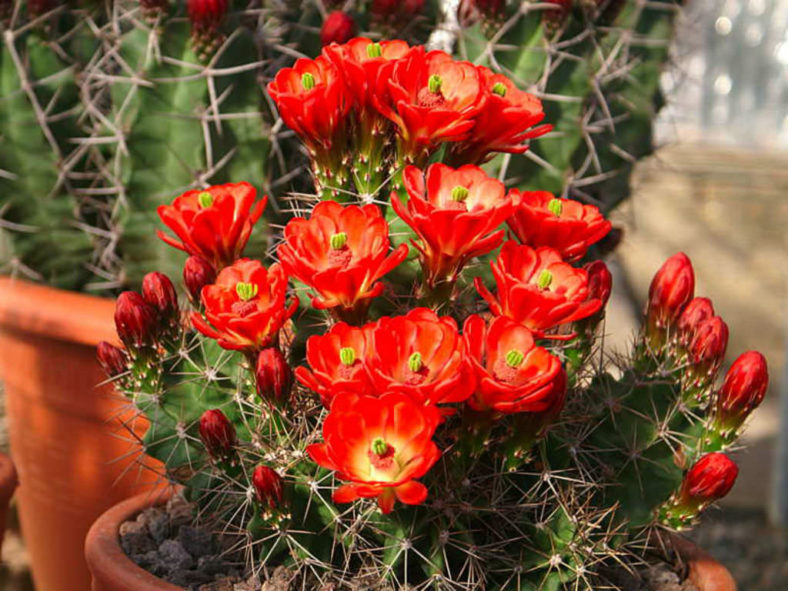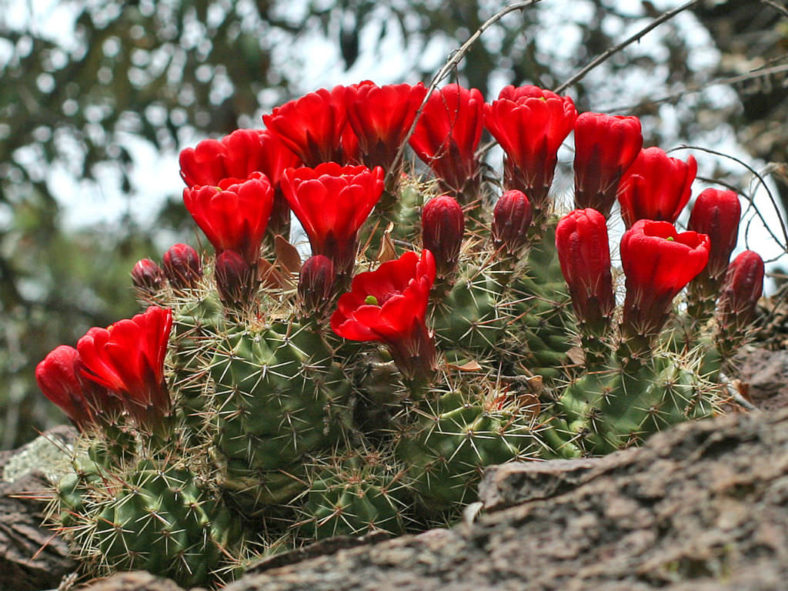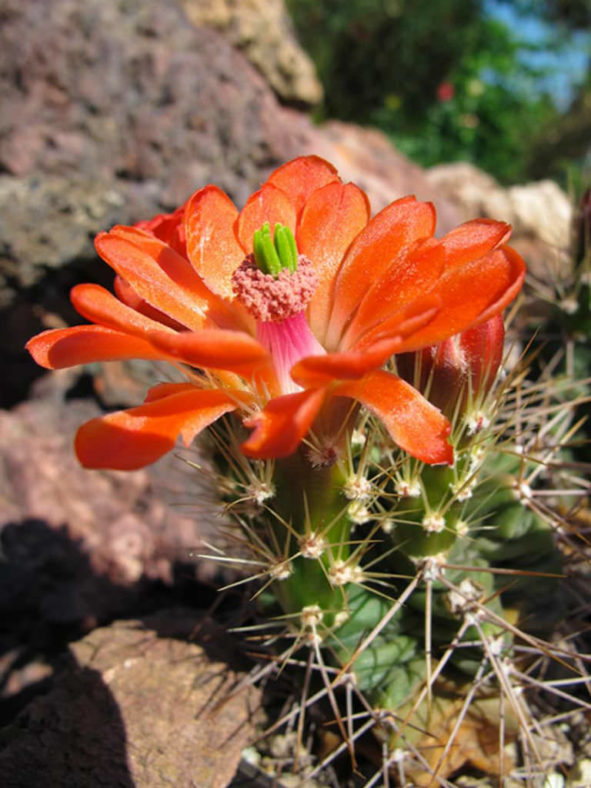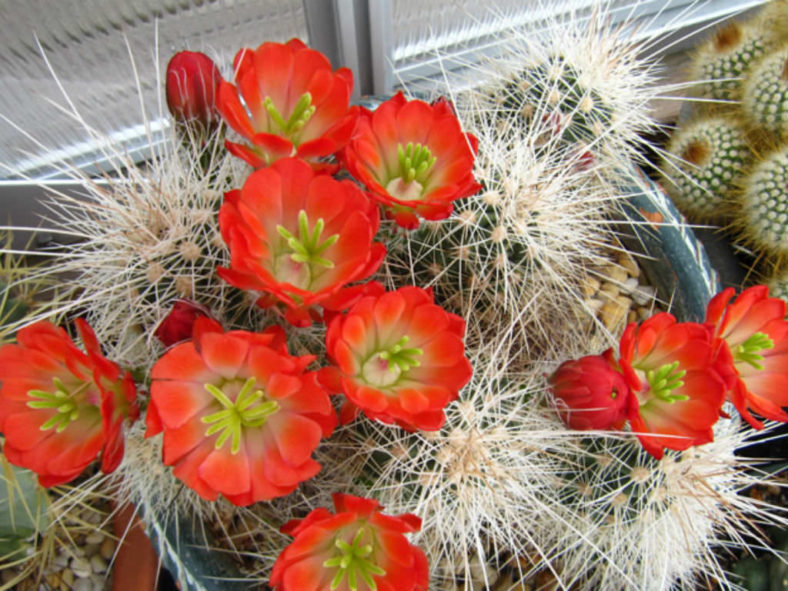Scientific Name
Echinocereus coccineus Engelm.
Common Name(s)
Arizona Hedgehog, California Hedgehog, Claret Cup Cactus, Golden Rainbow Hedgehog, Mexican Claret Cup Cactus, Scarlet Beehive Cactus, Scarlet Hedgehog Cactus
Synonym(s)
Cereus coccineus, Echinocereus triglochidiatus subsp. coccineus
Scientific Classification
Family: Cactaceae
Subfamily: Cactoideae
Tribe: Pachycereeae
Genus: Echinocereus
Etymology
The specific epithet "coccineus" (pronounced "kok-SIN-ee-us") means "colored or dyed scarlet" and refers to the color of the flowers of this species.
Origin
Echinocereus coccineus is native to the southwestern United States (California, Nevada, Utah, Arizona, Colorado, New Mexico, and Texas) and northeastern Mexico (Baja California, Sonora, Chihuahua, and Coahuila).
Description
Echinocereus coccineus is a small cactus with erect, spherical to cylindrical, dark green stems with 5 to 20 ribs lined with clusters of long spines. The stems are loosely arranged into clumps or tightly packed into rounded mounds. They can grow up to 16 inches (40 cm) tall and 6 inches (15 cm) in diameter. The spines are ashy white to gray, brown, yellowish, reddish, or black, and often dark-tipped. They can measure up to 3.2 inches (8 cm) long. Each areole bears 1 to 18 radial spines and up to 6 central spines, which are sometimes absent.
The long-lasting, showy flowers are funnel-shaped and bloom from late spring to early summer, reaching 3.2 inches (8 cm) in length and 1.2 inches (3 cm) in diameter. They are crimson or scarlet, less often orange-red, rarely rose-pink, with or without a whitish or yellowish, sometimes pink central part. The fruits are greenish or yellowish to pinkish, bright red or brownish tinged, and contain a white pulp and black seeds. They can reach up to 1.6 inches (4 cm) in diameter.

Subspecies of Echinocereus coccineus
- Echinocereus coccineus subsp. coccineus
- Echinocereus coccineus subsp. paucispinus
- Echinocereus coccineus subsp. roemeri
- Echinocereus coccineus subsp. rosei
- Echinocereus coccineus subsp. transpecosensis
How to Grow and Care for Echinocereus coccineus
Hardiness: USDA hardiness zones 9a to 11b: from 20°F (-6.7°C) to 50°F (10°C).
If you can grow other globular cacti, you can most likely grow Echinocereus well. One of the key success factors is avoiding any hint of wet soil. Because their root systems are weak, they are especially prone to root rot, which can eventually kill your plant. Otherwise, they thrive on a program of intense, bright light, slight water, and a steady diet of light fertilizer. These cacti are vulnerable to mealybugs and aphids.
Echinocereus are slow-growing cacti that should only need repotting every other year or so. You can prolong the time to repotting by removing plantlets and potting them up in their own pots. When repotting a cactus, remove it from its pot and remove any clumped soil. These plants tend to be shallow-rooted with weak root systems, so take care not to damage their roots.
Learn more at How to Grow and Care for Echinocereus.
Links
- Back to genus Echinocereus
- Succupedia: Browse succulents by Scientific Name, Common Name, Genus, Family, USDA Hardiness Zone, Origin, or cacti by Genus
Photo Gallery
Click on a photo to see a larger version.


